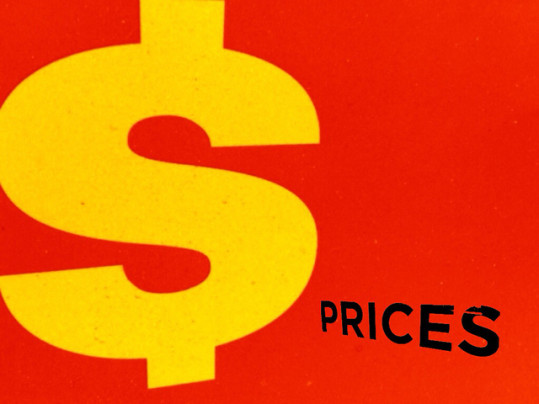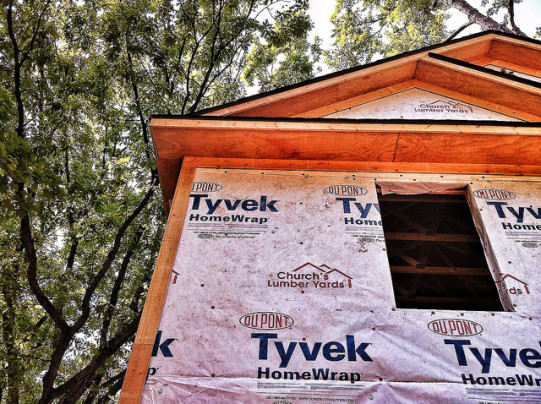Despite falling for the first time in five months, the National Association of Realtors’ Pending Home Sales Index remains 8 percent higher than one year ago, according to June’s results. The index registered a nearly 2 percent drop from the month before but still managed to post this year’s third best reading. Because of this, Lawrence Yun, NAR’s chief economist, believes the dip won’t affect the solid pace of home sales this summer. “Competition for existing houses on the market remained stiff last month, as low inventories in many markets reduced choices and pushed prices above some buyers’ comfort level,” Yun said. “The demand is there for more sales, but the determining factor will be whether or not some of these buyers decide to hold off even longer until supply improves and price growth slows.” Yun also noted the increasing number of current homeowners that are opting to sell their homes in hopes of trading up or down. Though this is generally a positive development, it doesn’t do anything to improve inventory levels as most of these sellers are likely buying another home. Regionally, the index was up in the Northeast and West, but down 3 percent in both the Midwest and South. More here.
Archive for July 2015
Mortgage Rates Fall To Lowest Level In A Month
According to the Mortgage Bankers Association’s Weekly Applications Survey, average mortgage rates fell across all loan categories last week, including 30-year fixed-rate loans with both conforming and jumbo balances, loans backed by the Federal Housing Administration, and 15-year fixed-rate loans. The drop in rates spurred a 2 percent increase in the Refinance Index, while the Purchase Index was essentially flat from the week before. “Although total purchase applications were little changed for the week, this resulted from a combination of a small increase for conventional purchase loans, and a decrease for government purchase loans,” MBA’s chief economist, Michael Fratantoni, told CNBC. “We continue to see a decline in the average size of purchase loans, further indicating that entry-level buyers are beginning to return to the market.” Though purchase applications – which are a good indicator of future home sales – have been relatively flat the past few weeks, they remain 18 percent higher than last year’s estimate. The MBA’s weekly survey has been conducted since 1990 and covers 75 percent of all retail residential mortgage applications. More here.
Most Americans Don’t Follow Home Prices
A recently released survey found that most Americans have no idea what’s happening with home prices in their area. In fact, 25 percent of participants thought home prices were flat last year, when they were actually up 4 percent nationally and, in 65 metro areas, saw double-digit increases. But, despite the seeming disinterest, home prices are important – whether you’re a prospective buyer, thinking about selling your house, or are a current homeowner. That’s because, for most of us, our home is our largest asset, which means having an idea of whether or not it’s growing in value should be of interest. And, for those of us thinking of buying or selling a home, the importance of knowing whether prices are up or down in our area is obvious. Still, the survey’s findings show a fairly common misconception that home values aren’t rising, when they really are. In some cases, such as Tampa, large percentages of respondents were wrong about their local market, with 45 percent guessing that values were flat when they actually rose by 9 percent. Other areas were closer to the truth, with Boston leading the way. In Boston, 23 percent of participants correctly judged local home prices, the highest percentage of any metro area. More here.
Sunny Real Estate Forecast Calls For Gains
Each month, Fannie Mae releases the findings of its Economic & Strategic Research Group. The monthly release updates their outlook for both economic growth and the housing market. According to their most recent forecast, there is evidence that economic activity was stronger than expected in the second quarter and should help boost consumer confidence and the housing market through the end of the year. Because of this, Doug Duncan, Fannie Mae’s chief economist, says the real estate market should see continued gains. “We expect to see strong sales, lean inventories, and rising confidence through the rest of the year, which should support increased home building activity and give an added boost to economic growth,” Duncan said. “Although a lack of skilled labor may hurt construction activity, our forecast calls for housing starts to average 1.12 million units. We expect existing and new home sales to climb by approximately 5 and 25 percent, respectively, and total mortgage originations to rise approximately 24 percent to $1.46 trillion, with a refinance share of 47 percent.” The positive forecast is based, in part, on strengthening consumer confidence, household net worth, and income growth prospects, which are the result of an improved job market. More here.
New Home Sales Up 18% From Last Year
New estimates released by the U.S. Census Bureau and the Department of Housing and Urban Development show sales of newly built single-family homes fell 6.8 percent in June compared to the month before. But, despite the drop, sales are still 18.1 percent above last year’s estimate. That – combined with recent data showing sales of existing homes rising and building permits near 8-year highs – is among the reasons economists don’t feel the slower-than-expected June sales are a sign of trouble in the housing market. In fact, most analysts expect residential real estate to continue to improve. Also in the report, the number of new homes available for sale increased 3.4 percent and reached its highest level since 2010. That’s good news for buyers, since more new homes being built means prices will moderate and affordability conditions should improve. As evidence of this, the report found the median price of new homes sold in June was $281,800, while the average price was $328,700 – both lower than the month before. Regionally, sales dropped in the Midwest, West, and South but were up significantly in the Northeast, rising 28 percent. More here.
Sales of Existing Homes At 8-Year High
In June, sales of previously owned homes reached their fastest pace since February 2007, according to the National Association of Realtors. Sales rose 3.2 percent above the month before and are now 9.6 percent higher than they were at the same time last year. Lawrence Yun, NAR’s chief economist, said this year’s spring buying season has been the strongest since the downturn. “Buyers have come back in force, leading to the strongest past two months in sales since early 2007,” Yun said. “This wave of demand is being fueled by a year-plus of steady job growth and an improving economy that’s giving households the financial wherewithal and incentive to buy.” This spring’s mortgage rate increases were also likely to have spurred some buyers to act fast and not wait any longer to buy, Yun added. Regardless of the reason behind the strength of this year’s spring sales season, the increased buyer demand – along with limited inventory – has driven down the number of days the typical home stays on the market. In fact, homes for sale are typically only on the market for 34 days now, which is the shortest amount of time since the NAR began tracking it in 2011. It’s also six days quicker than in May, when homes typically stayed on the market for 40 days. More here.
Size Of Average Home Loan Falls
According to the Mortgage Bankers Association, the size of the average home loan has fallen and is now at its lowest level since February. The drop is good news for the real estate market because it indicates that there are more first-time home buyers buying homes this year. “Given the overall increase in purchase volume, we view this as a positive development, as it signifies more first-time home buyers are getting into the market,” Mike Fratantoni, MBA’s chief economist, told CNBC. “We are not back to levels typical of a healthy market, but for the first time in a while it is steadily improving.” The news comes during a week when mortgage application volume was virtually unchanged from the week before, according to the MBA’s Weekly Applications Survey. The Refinance Index slipped 1 percent from one week earlier, while demand for loans to buy homes bumped up 1 percent. Purchase application demand – which is considered a good indicator of future home sales – is now 18 percent higher than it was the same week last year. Average mortgage rates were also relatively flat, with rates unmoved on 30-year fixed-rate mortgages with conforming loan balances as well as 15-year fixed-rate loans. Mortgage rates declined on loans with jumbo balances and those backed by the Federal Housing Administration. The MBA’s weekly application survey has been conducted since 1990 and covers 75 percent of all retail residential mortgage applications. More here.







